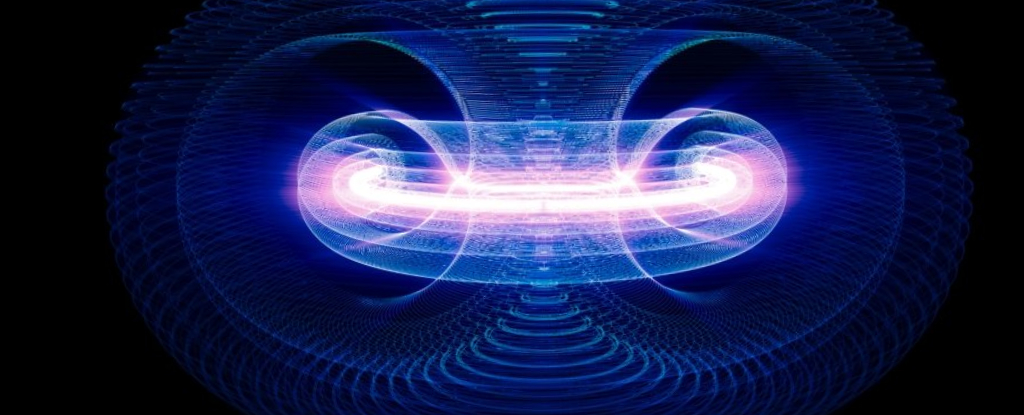Nuclear fusion promises a virtually limitless, sustainable energy source via processes similar to those powering the Sun, provided some rather tricky and fundamental physics problems can be figured out first.
There are a variety of methods currently being investigated for squeezing energy out of atoms, each with their pros and cons. New research suggests we may soon have a way of overcoming a major obstacle in processes that use donut-shaped tunnels known as tokamaks.
A previously theorized barrier to tokamak fusion known as the Greenwald limit has now been smashed by a factor of ten, thanks to the efforts of a team of researchers from the University of Wisconsin.
Though the mechanisms behind the limit aren’t well understood, the empirical rule sets a ceiling on electron density in the tokamak’s heated plasma.
Having a reliable way to push this limit means we can leap forward in terms of tokamak fusion reactor stability and efficiency, getting us closer to the day when nuclear fusion can become a practical reality.
“Presented here are tokamak experiments with an electron density exceeding the Greenwald limit by up to a factor of ten in steady conditions, which is unprecedented,” write the researchers in their published paper.
Nuclear fusion – the forcing together of atomic nuclei to release surpluss energy – requires intense heat created by the confinement of the charged particles that make up plasma.
A tokamak is a particular type of nuclear fusion reactor that uses currents to drive plasma through the center of a large, hollow ring. Magnetic fields within this hot mess of charged particles help keep it confined, yet the plasma is more prone to instabilities than that in similar methods, and highly subject to a rather strict limit to the density of the plasma’s electrons. A higher density of electrons would more reactions and more energy.
The team thinks two key characteristics of the MST helped break the limits of this density so comprehensively: its thick, conductive walls (for stabilizing the magnetic fields manipulating the plasma), and its power supply, which can be adjusted based on feedback (again, crucial in stability).
“The maximum density appears to be set by hardware limitations rather than plasma instability,” write the researchers.
It’s another win for tokamak fusion in a recent series of successes. In the last few years scientists have been busy building bigger reactors, increasing the energy produced from them, and reaching higher temperatures for the reactions to take place in.
This doesn’t mean nuclear fusion will be ready to go anytime soon, and there are caveats to talk about here. The plasma wasn’t operating at the ultra high heat as it normally does in fusion reactions, so these experiments will need to be scaled up in that respect.
There’s confidence among the authors behind the new study that scientists will be able to figure out how to get these results on other machines – though there’s still work to do to analyze exactly why this particular setup works so well.
“Questions remain about why, specifically, MST is able to operate with high Greenwald fraction, and to what extent this capability could be extended to higher-performance devices,” write the researchers.
The research has been published in Physical Review Letters.





